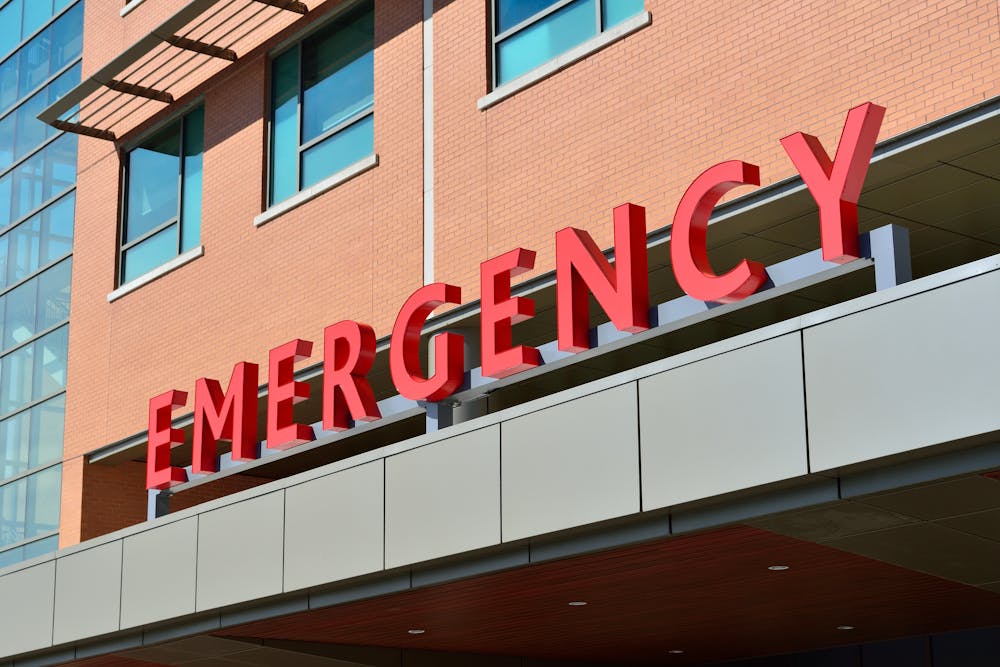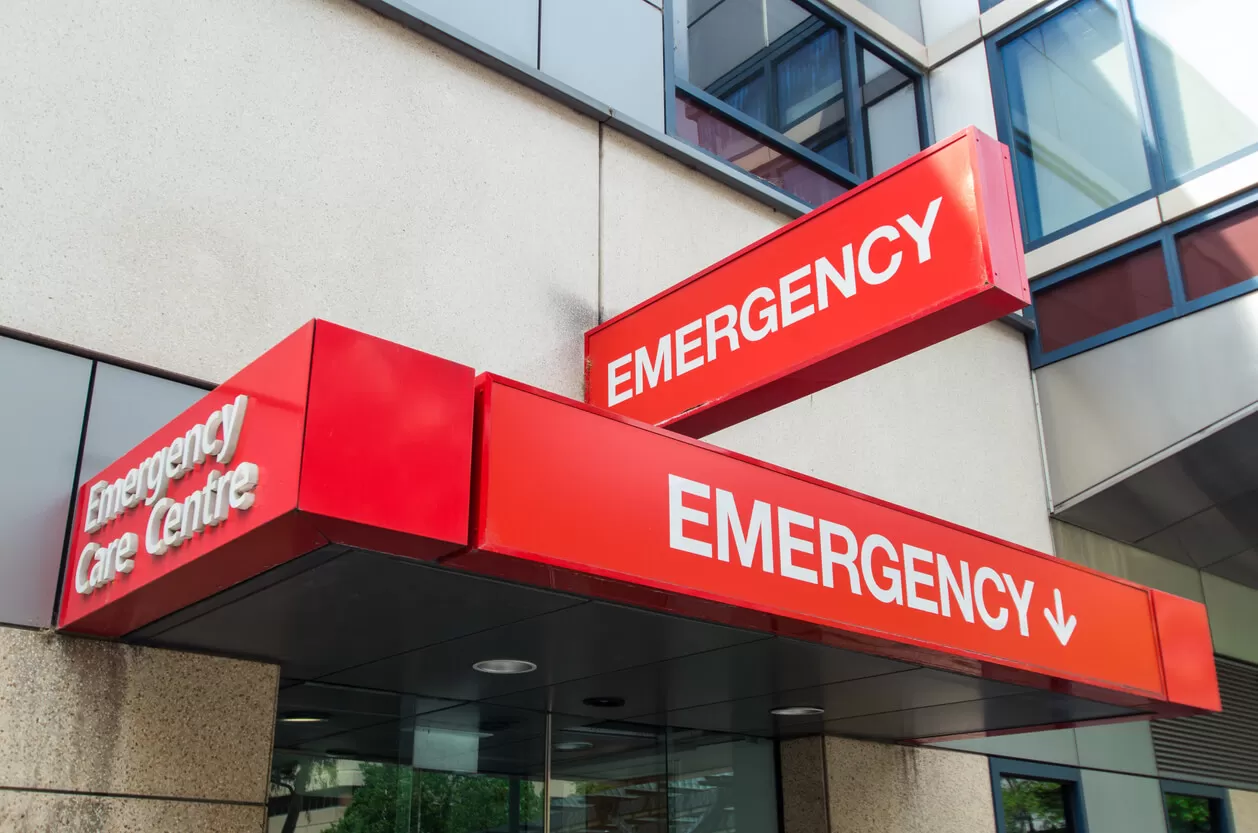Imagine it’s a regular weekend, and you’re having a peaceful afternoon with your family when an emergency happens—a fall, sudden chest pain, or a serious allergic reaction. When faced with an unexpected medical situation, many questions can arise in your mind. Where should I go? Knowing the difference between an Emergency Department (ED) and an Emergency Room can be an important factor in choosing the right level of care for your specific needs.
While these terms are often used interchangeably, they have subtle yet important distinctions that can impact the quality and swiftness of medical attention you receive. Let’s explore these nuances to ensure that you make informed decisions when urgency strikes, whether it’s a minor injury, severe chest pain, or a life-threatening emergency.
What Is an Emergency Department?
An Emergency Department (ED) is a specialized unit in a hospital designed to address various urgent and critical medical conditions. Unlike urgent care clinics and minor health issue settings, an ED is designed to provide comprehensive care for severe injuries, broken bones, life-threatening conditions, and acute medical emergencies such as severe chest pain, traumatic injuries, and loss of consciousness.
Staffed by a multidisciplinary team of healthcare professionals, including emergency medicine physicians, primary care doctors, nurse practitioners, physician assistants, and specialists, the ED is prepared to offer advanced treatment and diagnostic services around the clock. This guarantees that patients with severe symptoms, broken bones, or those experiencing a medical emergency receive prompt, high-quality medical attention.
What Is an Emergency Room?
An Emergency Room (ER) is an important component of a hospital’s healthcare facilities, dedicated to providing immediate medical attention to individuals experiencing acute and life-threatening medical emergencies. Often referred to interchangeably with the Emergency Department (ED), the ER focuses on addressing the most urgent and severe medical conditions, such as severe chest pain, acute injuries, and traumatic incidents.
Unlike urgent care centers or primary care providers, the ER is staffed with highly trained emergency medicine physicians, nurse practitioners, and physician assistants, all equipped to manage a variety of important medical situations. Whether it’s a sudden allergic reaction, shortness of breath, abdominal pain, a severe injury, or a life-threatening illness, the ER is designed to offer rapid, specialized care tailored to the immediate needs of the patient.
Emergency Room vs Emergency Department: What Are Their Differences?
Scope of Care
The ED is a larger hospital section dedicated to emergency care, featuring multiple specialized rooms and areas for addressing severe symptoms like minor burns and traumatic injuries. On the other hand, the ER is the initial area within the ED where patients are triaged and first assessed. It provides immediate medical attention for urgent, life-threatening conditions such as severe chest pain, acting as the entry point to specialized care.
Facility Size and Structure
The ED is a comprehensive unit within the hospital, housing advanced imaging equipment and diagnostic services to manage both extreme emergencies and less acute cases like respiratory infections. Conversely, the ER is a smaller part of the ED where initial evaluations and triage occur. Patients are then directed to different sections of the ED for further treatment based on the severity of their condition.
Type of Medical Issues
The ED is designed to offer extensive care for a broad range of medical issues, from acute illnesses to major trauma, including life-threatening emergencies like myocardial infarction and severe allergic reactions. It provides comprehensive care and follow-up treatments. On the other hand, the ER primarily stabilizes patients with severe medical emergencies, such as loss of consciousness or severe injury, before moving them to specialized areas within the ED for continued care.
Staff and Specialization
The ED employs a multidisciplinary team, including emergency medicine physicians, nurse practitioners, physician assistants, and other specialists, delivering advanced treatment for complex medical situations with a holistic approach. In contrast, the ER also has a skilled staff but focuses on rapid triage and initial treatment. ER personnel quickly assess the patient’s condition and determine necessary interventions before directing them to the appropriate section of the ED.
Equipment and Resources
The ED is equipped with a wide range of advanced diagnostic tools and lifesaving technologies essential for operating as a full-spectrum emergency care facility. It includes everything from imaging equipment to specialized machinery, ensuring comprehensive patient care. On the other hand, the ER, as the first point of contact, may have preliminary diagnostic tools but relies on transferring patients to other ED sections for more in-depth testing and treatment.
What Are the Common Misconceptions Between Them?
- Misunderstanding the Scope of Services. Many people mistakenly believe that the ED and the ER provide identical services. However, the ED is a comprehensive unit within the hospital equipped with advanced diagnostic tools and lifesaving technologies.
- Confusion Around Accessing Care. Knowing whether to go to the ED or just the ER can be perplexing. In general, if the condition is extremely severe or life-threatening, like myocardial infarction or severe allergic reactions, heading straight to the ED is advisable.
- Accessibility of Services. Another common misconception is the perceived availability of services between the ED and the ER. Some believe that both facilities are always readily accessible, regardless of location or time. However, not all hospitals have a dedicated ED, and some smaller medical establishments might only have an ER.
- Wait Times. Many patients assume that the wait times in the ED and ER are the same, leading to frustration and anxiety. In reality, the triage process in the ER prioritizes patients based on the severity of their conditions, which can result in longer wait times for less critical cases.
Emergency Room vs Department: Know Where to Go—Turn to Us for Immediate Help!
Knowing the distinctions between the Emergency Department (ED) and the Emergency Room (ER) is crucial for making informed decisions during medical emergencies. Recognizing the scope of services and knowing when to seek care can greatly impact the quality and timeliness of the care you receive. Additionally, understanding accessibility and wait times helps manage expectations and reduces stress during such critical moments.
At Reliant Emergency Room, we are committed to providing prompt, high-quality medical attention. No matter what age or situation, we are here to provide prompt, expert care. Our emergency team is equipped with up-to-date medical equipment and lifesaving technologies to ensure comprehensive care.
Choose Reliant Emergency Room for immediate, expert care when you need it most.








